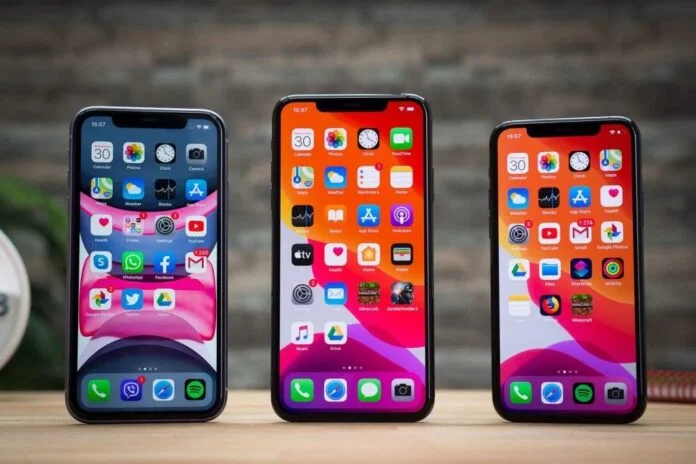iPhones have become an integral part of our lives, serving as essential communication tools, multimedia devices, and productivity assistants. The display plays a crucial role in the overall user experience, and any damage to the LCD screen can significantly impact usability and functionality. If you are experiencing issues with your iPhone’s LCD screen, it may be time to consider a replacement. In this article, we will explore the signs that indicate the need for an iPhone LCD screen replacement and discuss When Is The Right Time To Replace Your iPhone LCD Screen?
Cracked or Shattered Screen
One of the most obvious signs that you need a replacement iPhone LCD screen is a cracked or shattered screen. Accidental drops or impacts can result in visible cracks, making it difficult to view content, navigate the device, and perform tasks effectively. Not only does a cracked screen compromise the aesthetics of your iPhone, but it can also lead to further damage if left unaddressed. Replacing the LCD screen will restore the device’s visual appeal and ensure smooth and unobstructed operation.
Unresponsive or Non-Functioning Display
An unresponsive or non-functioning display is another indication that it’s time for an LCD screen replacement. If you find that your iPhone screen does not respond to touch inputs or fails to display any content, it may be due to a faulty LCD screen. This issue can occur as a result of hardware malfunctions, water damage, or wear and tear over time. Replacing the LCD screen will revive the responsiveness of your iPhone, allowing you to use it seamlessly without any hindrance.
Flickering or Distorted Colors
A flickering display or distorted colors can be a frustrating experience. If you notice inconsistent brightness levels, color shifts, or abnormal visual effects on your iPhone screen, it could be a sign of a failing LCD panel. This problem may arise from internal display circuitry issues or damage to the LCD components. By opting for an LCD screen replacement, you can eliminate these visual irregularities and enjoy a clear and vibrant display once again.
Dead Pixels or Lines
Dead pixels or lines appearing on the screen are another common problem that necessitates an LCD screen replacement. Dead pixels are pixel-sized spots on the display that do not illuminate properly, resulting in black or colored dots. Similarly, vertical or horizontal lines can disrupt the overall viewing experience. These issues can be caused by manufacturing defects, physical damage, or prolonged usage. By replacing the LCD screen, you can eliminate dead pixels and lines, restoring the screen’s integrity and ensuring a flawless display.

Improved Display Quality and Durability
Investing in an iPhone LCD screen replacement not only resolves existing issues but also provides an opportunity to upgrade the overall display quality and durability. With advancements in technology, newer LCD screens offer better color accuracy, enhanced brightness, and improved viewing angles. Additionally, replacing the screen allows you to restore the original oleophobic coating, reducing fingerprint smudges and improving the overall touchscreen experience. Furthermore, the replacement screen will be free from any scratches or damage, ensuring a longer lifespan for your device.
Warranty Coverage Considerations
Before opting for an iPhone LCD screen replacement, it’s essential to consider the warranty coverage of your device. If your iPhone is still under warranty, check whether the LCD screen replacement is covered. In such cases, it is recommended to take advantage of the warranty services provided by Apple or authorized service providers. This ensures that the replacement is performed by qualified technicians using genuine parts, maintaining the integrity of your device.
Professional Assistance
When it comes to replacing the LCD screen of your iPhone, it is advisable to seek professional assistance. Authorized service centers or reputable repair shops have the expertise and knowledge to perform the replacement accurately and efficiently. Attempting to replace the screen yourself or going to an unauthorized repair shop may result in further damage or voiding your device’s warranty. By entrusting the job to professionals, you can have peace of mind knowing that your iPhone is in safe hands.
Conclusion
When your iPhone’s LCD screen starts exhibiting signs of damage or malfunction, it is crucial to consider getting a replacement. Whether you have a cracked screen, unresponsive display, flickering colors, dead pixels, or lines, replacing the LCD screen can restore your device’s functionality and visual appeal. Furthermore, an LCD screen replacement provides an opportunity to upgrade the display quality and durability, enhancing your overall user experience. If you find yourself experiencing any of these issues, consult a professional repair service or authorized Apple service center to assess the situation and carry out the necessary LCD screen replacement, ensuring that your iPhone continues to serve you optimally. The best thing to do would be to go to a wholesale mobile phone accessories supplier in Ireland, buy a screen protector, and keep the screen of your phone safe from damage.

